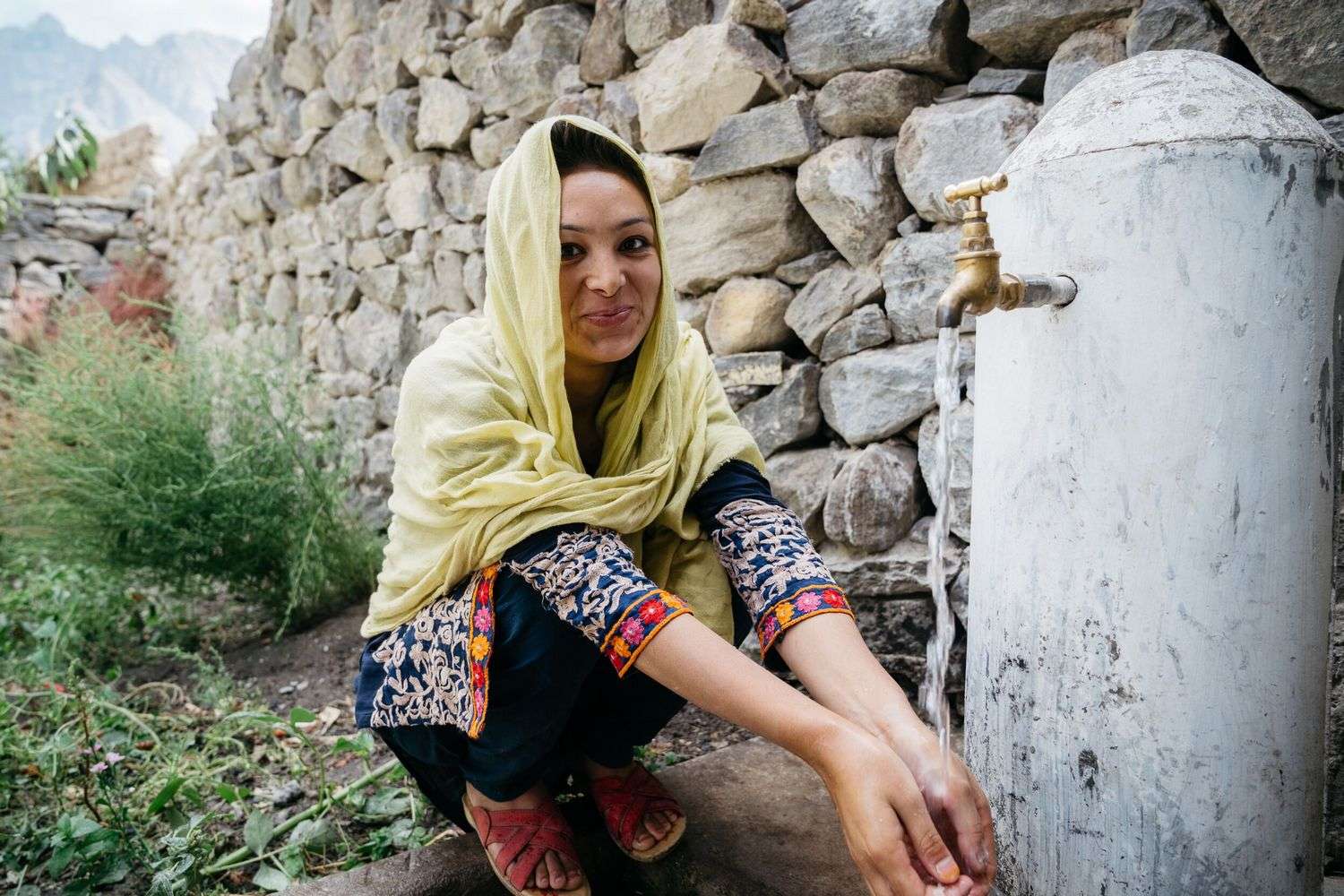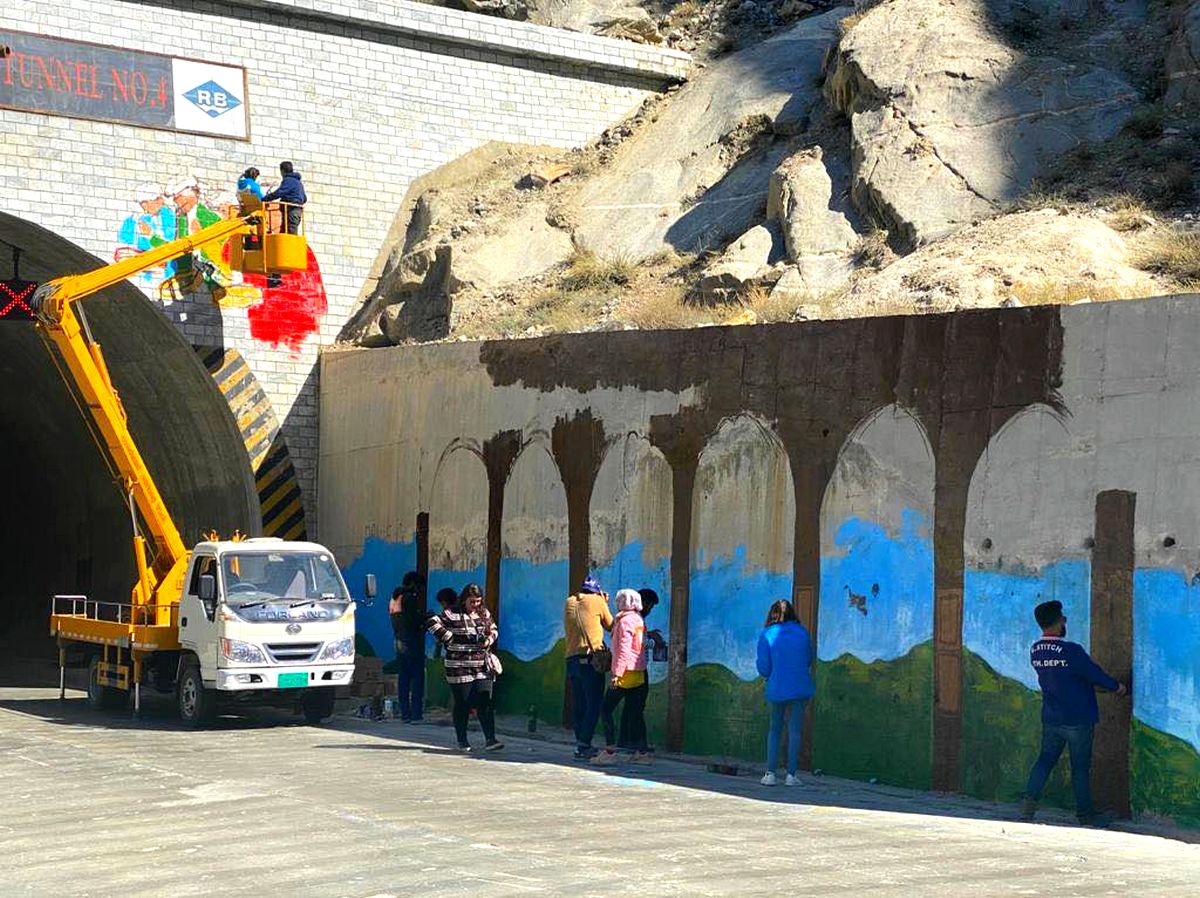Hunza
First ever Gojal Futsal Cup to kick off in Islamabad this December

The first ever edition of Gojal Futsal Cup 2018 is all set to be played in Islamabad this December. Ghulkin Rawalpindi Islamabad Students Association (GRISA) is organizing the futsal tournament for the youth of Gojal Upper Hunza district residing the Rawalpindi and Islamabad.
GRISA has formally invited teams based in the twin cities coming from different villages of Gojal to participate in the tournament. So far a dozen teams have registered themselves.
Only teams from Gojal would be allowed to participate, at the same time, players from one village would not be allowed to play for another village.
Dr. Sayeed Tajik, the man behind the event, told GBee that their organization is expecting up to 20 teams.
Gojal Futsal Cup Islamabad 2018 is being organized by Ghulkin Rawalpindi Islamabad Students Association (GRISA) in collaborating with Leisure Leagues Pakistan and Ghulkin Youth & Sports Organization (GYSO).
Gojal Futsal Cup Islamabad will be held at Ammar Shaheed Football Ground in sector G-10/3, Islamabad, on 1st and 2nd December 2018.
Details of the event can be found on the Gojal Futsal Cup Islamabad official Facebook event page.

Climate
Aga Khan Agency for Habitat and Government of Gilgit-Baltistan sign the Resilient Hunza Plan

The Aga Khan Agency for Habitat (AKAH Pakistan) has signed a partnership agreement with the Government of Gilgit-Baltistan to conduct a study for a sustainable solution of drinking water supply for central Hunza sourced from Attabad lake. The feasibility will include Hazard Vulnerability and Risk Assessments of the supply line and eight settlements. The agreement was signed between the Planning and Development Department of Gilgit Baltistan, the District of Hunza, and the Aga Khan Agency for Habitat in Hunza.
Central Hunza faces acute water shortage as most settlements depend on two glacial melt streams (Hassanabad Nallah and Ultar Nallah) as their primary source of water. The recent glacial lake outburst floods from both glaciers have severely impacted water supply and other community infrastructure. Growth in tourism to the area, critical for economic development, adds further pressure on the region’s water resources. Using its rich experience around the design and implementation of water supply systems in mountain areas combined with its hazard risk assessment and overall habitat planning expertise AKAH will provide technical support to the Government on this highly important study.
Speaking at the occasion, Mr. Syed Abrar Hussain Shah, Additional Chief Secretary Gilgit-Baltistan, said that “The Government of Gilgit Baltistan is grateful to Aga Khan Development Network for realizing several development projects, reducing poverty and empowering communities. We value AKAH’s support to the government of GB on various development initiatives particularly around climate change and providing access of clean drinking water to the rural and urban areas in Gilgit Baltistan.”
In his address, Mr. Fayaz Ahmed, Deputy Commissioner Hunza, shared that “This partnership with AKAH will enable us to provide sustainable access to clean drinking water to 5,500 households, commercial entities, health and education facilities from eight settlements of central Hunza including Faizabad, Altit, Karimabad, Ganish, Garelth, Haiderabad, Dorkhand and Aliabad This feasibility study will not only identify solutions for the current needs of the community but also help boost the tourism potential of the area in the years to come”
In his remarks, Mr. Nawab Ali Khan, Chief Executive Officer, Aga Khan Agency for Habitat, Pakistan shared that “AKAH has the mandate of creating resilient human habitats and we will support any initiative that is aligned with our mandate.” He further said “AKAH is thankful to the government for all its support that has enabled us to serve communities in need.”
Over the last two decades, the Aga Khan Agency for Habitat, Pakistan has provided 500,000 people with water and sanitation facilities across Pakistan mainly in mountain communities. This has resulted not only in reducing waterborne diseases but also improved health and economic conditions as well as reduced the burden on women and girls of fetching water from long distances.
Environment
Analyzing the recent “Sponsored Graffiti” in Hunza along the Karakoram Highway

The sensitivity and emotional attachment of people of Gilgit-Baltistan with the subject of wall chalking and interventions in the natural/cultural landscape have always been a hot topic. The people are very well aware as compare to any other city in Pakistan about art, its context, quality of art, and techniques to adopt. Highly professional artists in the field belonging to Hunza have long set a quality standard for the people to identify, differentiate and critic on an artwork which one doesn’t see very often in practice in any other city.
The inclination and awareness of people specifically youth towards arts, music and other forms of creative industries is increasing with every passing day. The professionals in the field of visual arts, music, and other forms of creative industry have proved themselves on national and international levels.

The underground art of graffiti has its origins in the late 1960s in Philadelphia USA writers such as Cornbread and Cool Earl went about writing their names to gain the attention of the community and media. Graffiti a practice of defacing a surface if done without consent is vandalism, with consent its a “work of art” used as a political tool.
The vandalism of natural mountains and rocks on side of Karakoram Highway – KKH through graffiti has long associated with the ugly painted names and slogans of “Senator Talha Mehmood”, the repeating visuals add more pain to this hectic journey on Karakoram Highway (KKH) while traveling from Islamabad to Gilgit. People highly discouraged the act and collectively discouraged any form of graffiti on rocks, natural landscape with or without consent.

The recent efforts of “Graffiti” by Sweet tooth and Gobbis Paints have been collectively discouraged as a hindrance in the natural beauty of its unique landscape. This model of graffiti may work very well in any other city and context, but it has faced heavy criticism and protest from everyone. The locals are very sensitive and emotional, and demanded immediate discontinuity of this activity. For any public art /urban intervention local context and communities have to be involved, the art has to be evolved from the society, communities , art cannot be imposed but it has to “be Evolved”.
Highly professional and local artists be involved to have a better understanding of context to define the form and its need. This activity could have been planned in a more creative way instead of just picking only one form of art (wall painting/graffiti), as any intervention in a natural/historic environment has to be reversible and temporary. The immediate response and raising a voice for this work is highly appreciated which clearly indicates the awareness and exposure of the people in Hunza for art and its quality.

The activity has been discontinued by the district government but the same critic and discouragement should be evident for the growing unplanned concrete buildings, growing temporary steel sheds and hotels, disappearance of community spaces, growing vehicular movements disturbing and polluting the environment, natural landscape and cultural fabric. I leave the discussion with few questions for everyone to think about :
1. Are we sensible enough before constructing new ugly concrete hotels and homes? “Abundant local materials”.
2. Do we consider how to involve any professional before construction/intervention in a natural/historic landscape?
3. Does the district government or the stakeholders (NGOs, Civil Society, Community, Political parties) were able to chalk out a policy for the future developmental challenges with growing investments in the tourism industry in Gilgit-Baltistan specific to Hunza?
4. Does any political party has this in their election manifesto to form an authority for policy making, by-laws and implementation of the guidelines for new constructions/interventions in Hunza?
These are the real issues and challenges everyone of us have to think and share.
-

 Culture6 years ago
Culture6 years ago5 Facts You Might Not Know About the Baltit Fort Hunza
-

 Diamer8 years ago
Diamer8 years ago4 Toursits Including 2 Kids Dead at Babusar Pass in a Van Accident
-

 Business & Economy5 years ago
Business & Economy5 years agoKarakoram Area Development Organization (KADO) appoints its first-ever female CEO
-

 Culture8 years ago
Culture8 years agoGinani Festival Held at Baltit Fort in Karimabad Hunza
-

 Pink8 years ago
Pink8 years agoInternational Women’s Day: 15 Inspiring Women from GBC who are breaking barriers despite all odds
-

 Hunza6 years ago
Hunza6 years agoBrigadier Inayat Hussain from Hunza promoted to the rank of Major General in Pakistan Army
-

 Quotes9 years ago
Quotes9 years ago10 inspirational quotes of Aga Khan IV on his birthday
-

 Hunza6 years ago
Hunza6 years agoNewlywed CSS Officer and husband found dead in their hotel room in Hunza






























